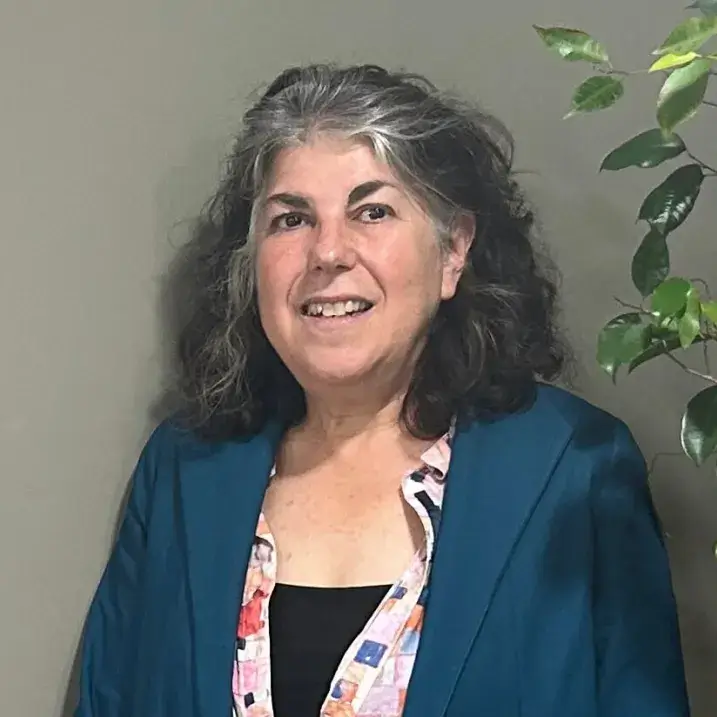341 Jeffords Hall
63 Carrigan Drive
Burlington, VT 05405
United States
- Ph.D. 1993, Duke University
Areas of expertise
- Evolution of invasiveness
- Population dynamics
- Coexistence in plant communities
Courses
BCOR 2100 Ecology and Evolution
PBIO 3220 Ecological Invasions
PBIO 3990 Special Topics: Evolutionary Ecology
PBIO 5220 Ecology of Invasive Species (Graduate Level)
Courses
BCOR 2100 Ecology and Evolution
PBIO 3220 Ecological Invasions
PBIO 3990 Special Topics: Evolutionary Ecology
PBIO 5220 Ecology of Invasive Species (Graduate Level)
Selected Publications
Kaproth, M. A., Eppinga, M. B., & Molofsky, J. (2023). Evolutionary history and intraspecific competition mediate ballistic seed dispersal. Functional Ecology, 37, 1935–1947. https://doi.org/10.1111/1365-2435.14347
Molofsky, J., Thom, D., Keller, S. R., & Milbrath, L. R. (2023). Closely related invasive species may be controlled by the same demographic life stages. NeoBiota, 82, 189–207. https://doi.org/10.3897/neobiota.82.95127
Molofsky, J., Park, D., Richardson, D. M., Keller, S. R., Beckage, B., Mandel, J., Boatwright, J., & Hui, C. (2022). Optimal differentiation to the edge of trait space (EoTS). Evolutionary Ecology, 36, 743–752. https://doi.org/10.1007/s10682-022-10192-7.
Hui, C., Richardson, D. M., Landi, P., Minoarivelo, H. O., Roy, H. E., Latombe, G., Jing, X., CaraDonna, P. J., Gravel, D., Beckage, B., & Molofsky, J. (2021). Trait positions for elevated invasiveness in adaptive ecological networks. Biological Invasions, 23(6), 1965–1985. https://doi.org/10.1007/s10530-021-02484-
Palacio-Lopez, K., & Molofsky, J. (2021). Phenotypic shifts following admixture in recombinant offspring of Arabidopsis thaliana. Evolutionary Ecology, 35, 575–593. https://doi.org/10.1007/s10682-021-10118-9
Divíšek, J., Chytrý, M., Beckage, B., Gotelli, N., Lososová, Z., Pyšek, P., Richardson, D., & Molofsky, J. (2018). Similarity between introduced and native plant species facilitates establishment but differences enhance invasion success. Nature Communications, 9. https://doi.org/10.1038/s41467-018-06995-4
Palacio-Lopez, K., Keller, S. R., & Molofsky, J. (2017). Genomic admixture between locally adapted populations of Arabidopsis thaliana (Mouse ear cress): Evidence of optimal genetic outcrossing distance. Journal of Heredity, 109, 38–46. https://doi.org/10.1093/jhered/esx079
Collins, A. R., Beckage, B., & Molofsky, J. (2017). Small scale genotypic richness affects plant performance and phenotypic variance of the invasive grass, Phalaris arundinacea. Journal of Plant Ecology, 11, 47–55. https://doi.org/10.1093/jpe/rtx056
Palacio-Lopez, K., Beckage, B., Scheiner, S., & Molofsky, J. (2015). The ubiquity of phenotypic plasticity in plants: A synthesis. Evolutionary Ecology, 5, 3889–3400.
Visser, V., & Molofsky, J. (2015). Ecological niche differentiation of polyploidization is not supported by environmental differences among species in a cosmopolitan grass genus. American Journal of Botany, 102, 36–49. https://doi.org/10.3732/ajb.1400432
Molofsky, J., Keller, S. R., Lavergne, S., Kaproth, M. A., & Eppinga, M. B. (2014). Human-aided admixture may fuel ecosystem transformation during biological invasions: Theoretical and experimental evidence. Evolutionary Ecology, 4, 899–910.
Gaertner, M., Biggs, O., te Beest, M., Molofsky, J., & Richardson, D. R. (2014). Invasive plants as drivers of regime shifts: Identifying high priority invaders that alter feedback relationships. Diversity and Distributions, 20, 733–744.
Eppinga, M. B., & Molofsky, J. (2013). Eco-evolutionary litter feedback as a driver of exotic plant invasion. Perspectives in Plant Ecology, Evolution and Systematics, 15, 20–31.
Calsbeek, B., Lavergne, S., Patel, M., & Molofsky, J. (2011). Comparing the genetic architecture and potential response to selection of native and invasive populations of reed canarygrass. Evolutionary Applications, 4, 726–735. https://doi.org/10.1111/j.1752-4571.2011.00195.x
Eppinga, M., Kaproth, M. A., Collins, A. R., & Molofsky, J. (2011). Litter feedbacks, evolutionary change and exotic plant invasion. Journal of Ecology. https://doi.org/10.1111/j.1365-2745.2010.01781.x
Lavergne, S., & Molofsky, J. (2007). Increased genetic variation and evolutionary potential drive the success of an invasive grass. Proceedings of the National Academy of Sciences, 104, 3883–3888.
Molofsky, J., & Ferdy, J. B. (2005). Extinction dynamics in experimental metapopulations. Proceedings of the National Academy of Sciences, 102, 3726–3731.
Molofsky, J., & Bever, J. D. (2002). A novel theory to explain species diversity in landscapes: Positive frequency dependence and habitat suitability. Proceedings of the Royal Society of London B, 269, 2389–2393.
Molofsky, J., Bever, J. D., & Antonovics, J. (2001). Coexistence under positive frequency dependence. Proceedings of the Royal Society of London B, 268, 273–277.
